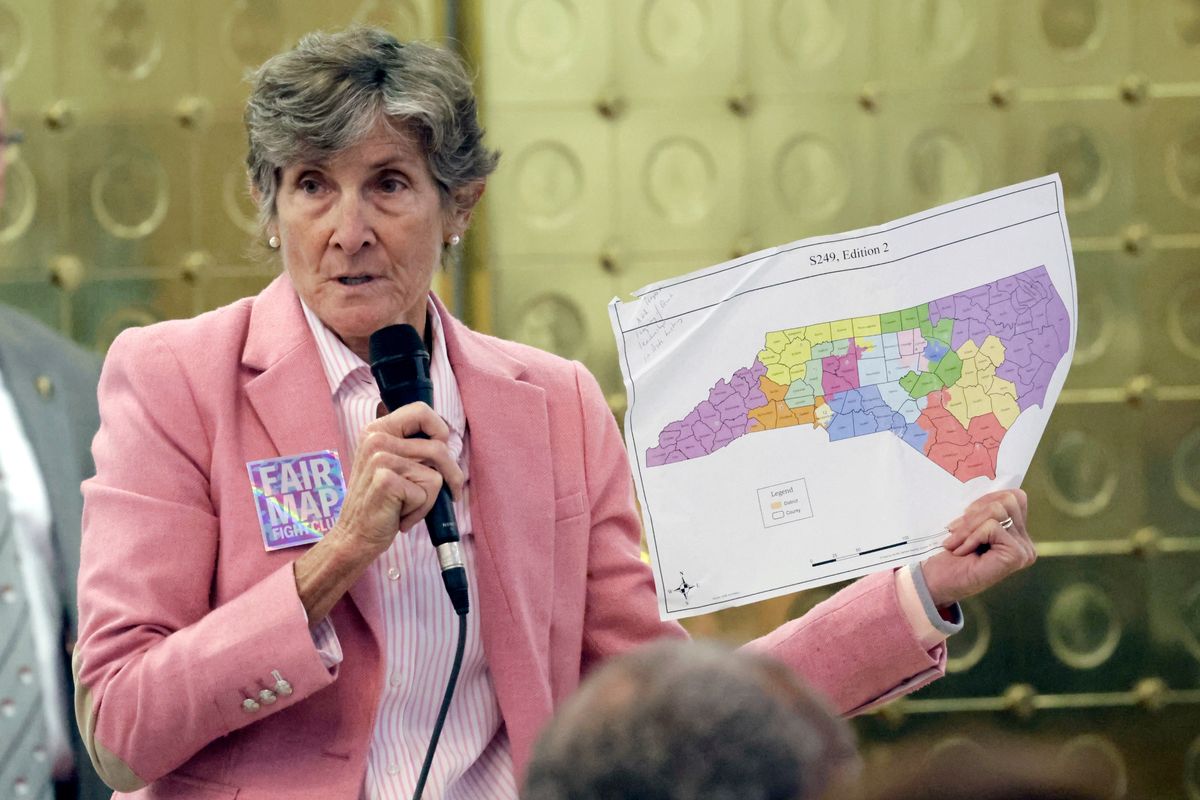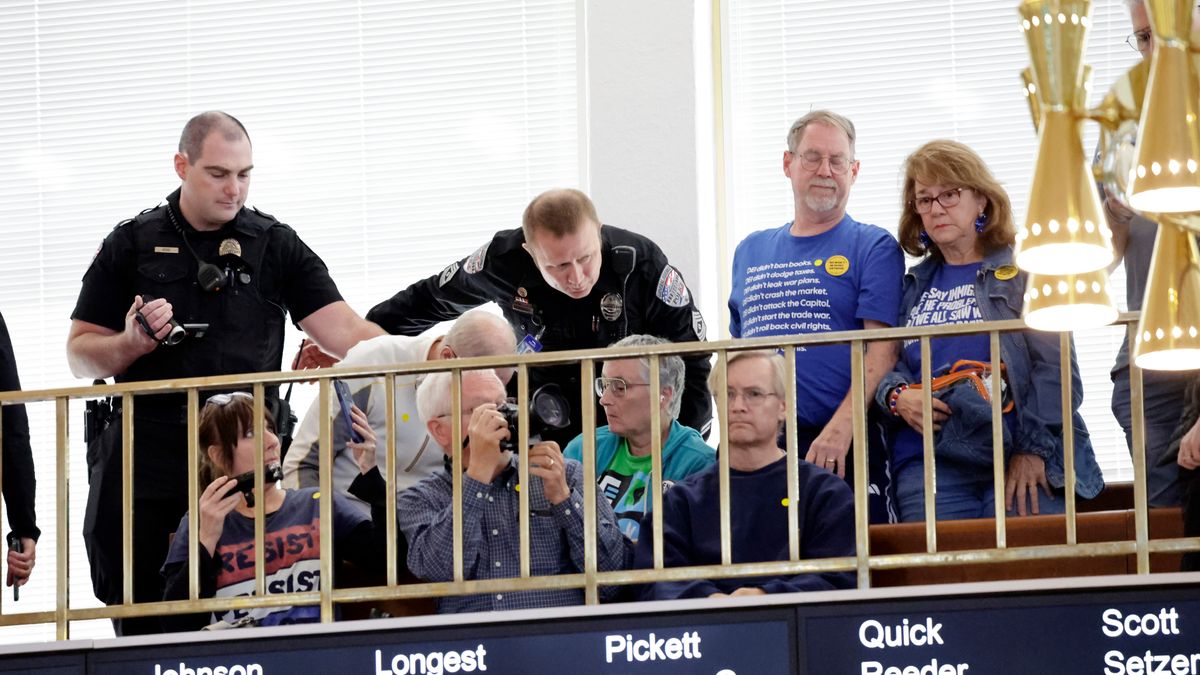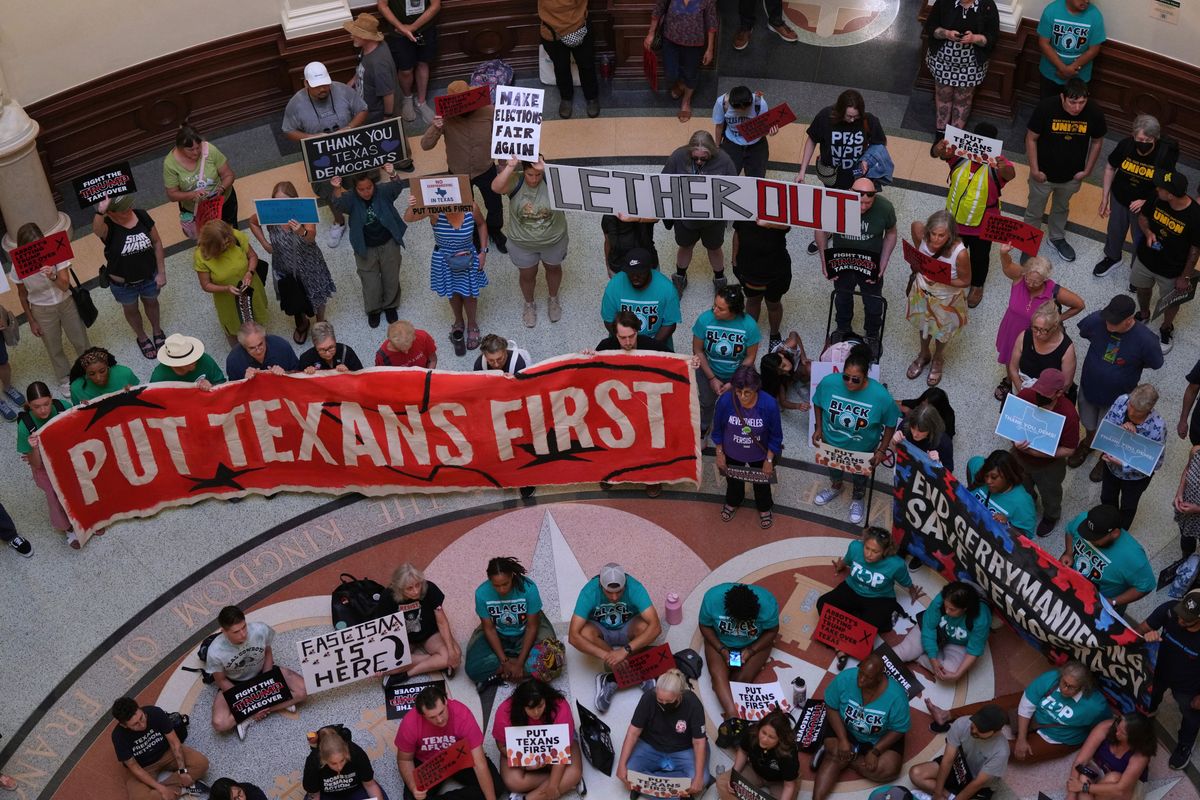President Donald Trump’s desire to secure the Republican majority in Congress has prompted an unusual burst of mid-decade redistricting in multiple states.
North Carolina is the latest to take action. The Republican-led General Assembly approved changes Wednesday to U.S. House district designed to help the party unseat a Democratic incumbent.
Texas was the first to answer Trump’s call to redraw its congressional districts for the GOP’s advantage ahead of next year’s elections. Democrats in California countered with their own redistricting effort, followed by Republicans in Missouri. Other states are considering joining the redistricting battle.
U.S. House districts typically are redrawn once a decade, immediately after a census. But some states have no rules against redistricting more frequently than that. And the U.S. Supreme Court has said there is no federal prohibition on political gerrymandering, in which districts are intentionally drawn to favor one party.
The stakes are high, because Democrats need to gain just three seats in the 2026 elections to take control of the House, which would allow them to impede Trump’s agenda. Historically, the president’s party has lost seats in midterm elections, a fate Trump is trying to avoid.
Why Republicans are targeting a North Carolina seat
The new congressional map reshapes the state’s only current swing district, held by Democratic U.S. Rep. Don Davis, by adding more Republican-leaning voters along the coast and shifting some inland voters into an adjacent Republican-held district. The GOP already controls 10 of the 14 House districts in North Carolina, a state Trump won by 51% last year. Davis won last year by less than 2 percentage points.
The revised districts cannot be vetoed by Democratic Gov. Josh Stein, though Democrats or civil rights groups are likely to bring a legal challenge.
How a Louisiana court case could affect other states
Louisiana lawmakers are to convene Wednesday in a special session called by Republican Gov. Jeff Landry to consider changes to next year’s election schedule. Republicans are trying to position the state for redistricting, in case the U.S. Supreme Court overturns the state’s current congressional map.
During arguments last week, the court’s six conservative justices seemed inclined to effectively strike down a Black-majority district in Louisiana because the districts relied too heavily on race. Such a ruling could upend a central provision of the 1965 Voting Rights Act, opening the door for lawmakers in Louisiana and other states to eliminate majority Black and Latino districts that tend to favor Democrats.
Where Republicans are still pressing for redistricting
Some Republicans in Indiana, Kansas and Nebraska are trying to rally support for redistricting.
Trump and Vice President JD Vance have pressed Indiana lawmakers to redraw the state’s congressional districts to try to expand Republicans’ current 7-2 edge over Democrats. Republican Gov. Mike Braun has said a legislative session on redistricting probably will happen, but legislators have yet to round up enough votes.
In Kansas, Republican lawmakers are trying to collect enough signatures from colleagues to call themselves into a special session on redistricting. The petition drive is necessary because Democratic Gov. Laura Kelly isn’t likely to call a session to redraw the current map that has sent three Republicans and one Democrat to the House.
Republican Nebraska Gov. Jim Pillen has expressed support for redistricting, though it remains tough to ensure enough Republican votes in the officially nonpartisan Legislature. Republicans already hold all three of the state’s U.S. House seats but are looking to shore up a competitive district that includes Omaha.
Why two states have to redraw their maps
Though the details remain to be worked out, Ohio will have new congressional districts for the 2026 elections. The state constitution requires new districts because the ones adopted by Republican officials after the 2020 census didn’t have sufficient bipartisan support. Republicans could use this as an opportunity to try to expand their current 10-5 seat advantage over Democrats.
Utah’s Republican-led Legislature passed a revised U.S. House map Oct. 6 in response to a court ruling striking down the districts they originally adopted after the 2020 census because the Legislature had unlawfully circumvented an independent redistricting commission. The same judge is now weighing whether to sign off on the new map. Republicans currently hold all four districts, though some could become more competitive for Democrats under the revisions.
What challenges persist in Texas, California and Missouri
The revised Texas congressional map could improve Republicans’ chances of winning five additional seats. The GOP currently holds 25 of the state’s 38 seats. But the map faces a legal challenge from civil rights groups and Black and Latino voters who have said it intentionally reduces the influence of their votes in violation of the Voting Rights Act and the U.S. Constitution.
Missouri’s revised map could help Republicans pick up one additional seat. They currently hold six of the state’s eight U.S. House seats. But opponents are pursuing a referendum petition that, if successful, would force a statewide vote on the new map. Several lawsuits also assert that mid-decade redistricting isn’t allowed under the state constitution.
California’s revised congressional map could help Democrats win five additional seats. They already hold 43 of the 52 seats. But the new map can take effect only if approved by voters in a Nov. 4 election. The vote is necessary to override a map adopted by an independent citizens commission after the 2020 census.
How other states might act
Officials in Florida, Illinois, Maryland and New York all have raised the possibility of redrawing U.S. House districts.
Republican Florida House Speaker Daniel Perez has created a special committee to look into redistricting. Republicans currently hold 20 of the state’s 28 seats.
In Maryland, where Democrats already hold seven of the eight U.S. House seats, some Democratic state lawmakers have said they will file redistricting legislation for the 2026 session.
Democrats already hold 14 of the 17 U.S. House seats in Illinois, but Democratic Gov. JB Pritzker has said it’s possible to draw even more districts favoring Democrats.
New York has an independent commission that redraws districts after every census. State Democrats have introduced legislation to allow mid-decade redistricting, but the soonest that new maps could be in place is the 2028 election. That is because the proposal would require an amendment to the state constitution, a change that would have to pass the Legislature twice and be approved by voters.
By DAVID A. LIEB
Associated Press




